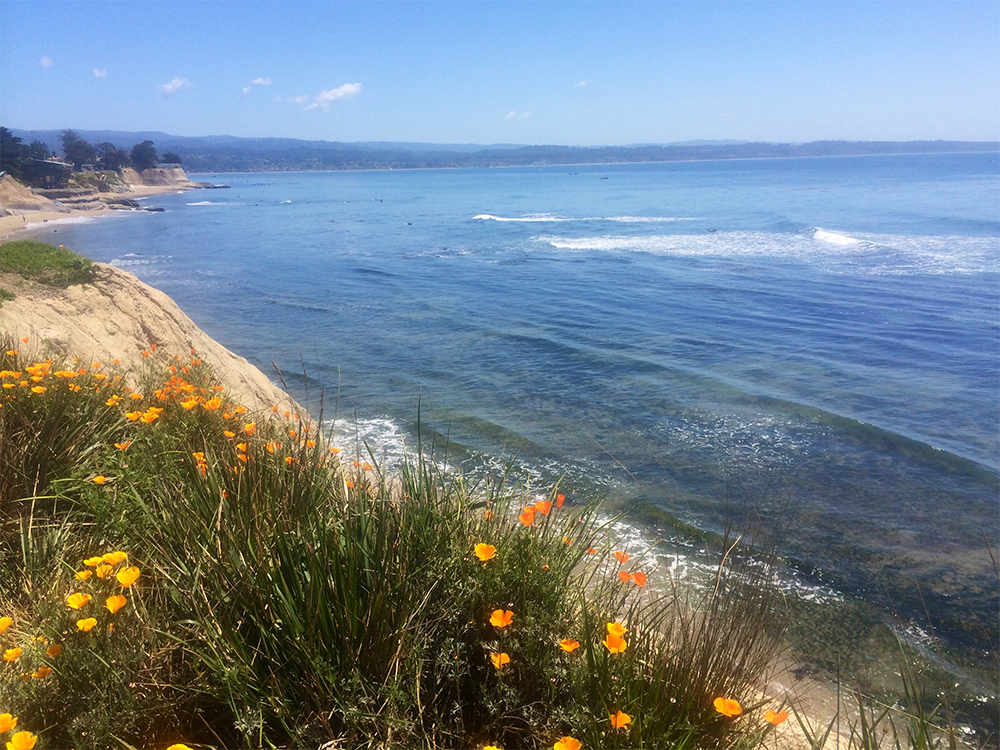New study incorporates blue carbon science into climate policy solutions

New research led by Dr Lisa Wedding, published this week in Global Environmental Change, investigates the carbon-capturing potential of habitats along the California coast and details pathways incorporating blue carbon habitats into climate change policy.
Emissions reduction pledges made by countries through the 2015 Paris Agreement represent the current global commitment to mitigate greenhouse gas emissions and tackle the climate crisis. Carbon sequestration and storage in natural ecosystems are critical for successful pathways to global decarbonisation. However, blue carbon habitats (namely seagrass, mangroves and coastal wetlands) and their associated sequestration benefits are vulnerable to losses from land-use change and sea-level rise.
In November 2020, the United States temporarily withdrew from the International Paris Agreement. This action underscored the increasing importance for state and local governments to uphold their commitment to reducing carbon emissions. California has a goal to reach net zero greenhouse gas emissions by 2045, a commitment that will require the state to take advantage of negative emissions opportunities. In order to address previously limited inclusion of blue carbon habitats in climate policies, lead author Dr Lisa Wedding and her team investigated the potential carbon sequestration and economic valuation of California's blue carbon habitats.
"As carbon markets become more prevalent and demands on the coastline intensify, the mapping and valuation of blue carbon habitats can help managers to prioritize carbon sequestration hot spots for coastal conservation or restoration", Dr Lisa Wedding says.
At one site, Elkhorn Slough, the carbon sequestration services of the tidal marsh habitat were projected to be worth $4.8 million to $9.7 million in California's carbon market value by 2100. These estimates contributed to policy recommendations about how California might better include blue carbon habitats in climate policy and land use planning. The study reports that incorporation of blue carbon habitats in climate change policy is a strategy for not only maintenance of these socially and financially valuable habitats, but also conserving significant carbon sequestration capabilities.
As California and other states take action to meet their climate goals, blue carbon habitats can provide an important pathway toward solutions. Studies that map and place value on these ecosystems can be directly incorporated into policy frameworks and inform ecosystem monitoring and management. "Our results illustrate how accessible information about carbon sequestration in coastal habitats can be directly incorporated into existing policy frameworks at the sub-national scale", according to Dr Wedding and her team.
Further information
- Wedding, L.M., Moritsch, M., Verutes, G., Arkema, K., Hartge, E., Reiblich, J., Douglass, J., Taylor, S. and Strong, A.L. (2021) Incorporating blue carbon sequestration benefits into sub-national climate policies. Global Environmental Change. 102206.
- Download the policy brief: Blue Carbon Sequestration: Benefits for Sub-National Climate Policy.
- Learn more about the Oxford Seascape Ecology Lab.
New study incorporates blue carbon science into climate policy solutions
New research led by Dr Lisa Wedding, published this week in Global Environmental Change, investigates the carbon-capturing potential of habitats along the California coast and details pathways incorporating blue carbon habitats into climate change policy.





